Successful Treatment of Coronary Artery Perforation with Hand-Made Stent Graft
by
Bahadır Şarlı
February 11, 2013Operator(s)
Bahadır Şarlı,MD; Erkan Demirci,MD; Ahmet Baktir, MD
Affiliation
Kayseri Education and Research Hospital, Kayseri, Turkey
Facility / Institute
Kayseri Education and Research Hospital, Kayseri, Turkey
Clinical History
A 42 years old male patient was admitted with resuscitated sudden cardiac death. Electrocardiogram revealed ST segment elevation in leads II, III, and aVF.
Angiography
LM: Normal
LAD: Severe stenosis in mid LAD
LCX: Normal
RCA: Proximal total occlusion with evidence of thrombus (Figure 1)
LAD: Severe stenosis in mid LAD
LCX: Normal
RCA: Proximal total occlusion with evidence of thrombus (Figure 1)
Procedure
After crossing the lesion with a floppy guidewire, we implanted a 3.5x25mm BMS at 16atm without predilation. However the stent balloon inflated asymetrically (Figure 2, Figure 3). Angiography revealed severe rupture of the right coronary artery beneath the stent (Figure 4). The largest stent graft was 3x16mm. Therefore, we produced a hand-made stent graft by covering the outer surface of a 3.5x18mm stent with a 3.5x15 mm balloon (Figure 5, Figure 6, Figure 7, Figure 8).
Conclusion(s) / Result(s)
Following implantation of two of these handmade stent grafts to the ruptured segment of the right coronary artery, leakage of blood from coronary artery to pericardial space was abolished (Figure 9). Echocardiogram performed after intervention and in the following hours ruled out pericardial tamponade.
Comments/Lessons
In cases with coronary rupture due to percutaneous coronary intervention and in absence of an appropriately-sized stent graft, a bare metal stent covered with the surface of a coronary balloon might be used as an alternative.
Conflicts of Interest
None


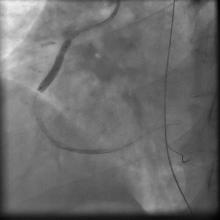
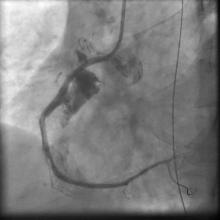
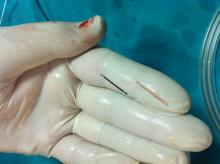
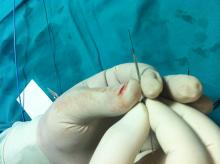
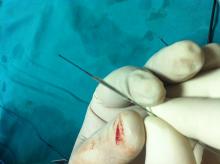
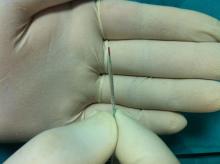
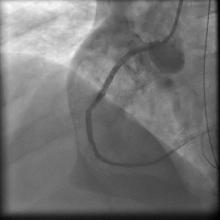
Comments